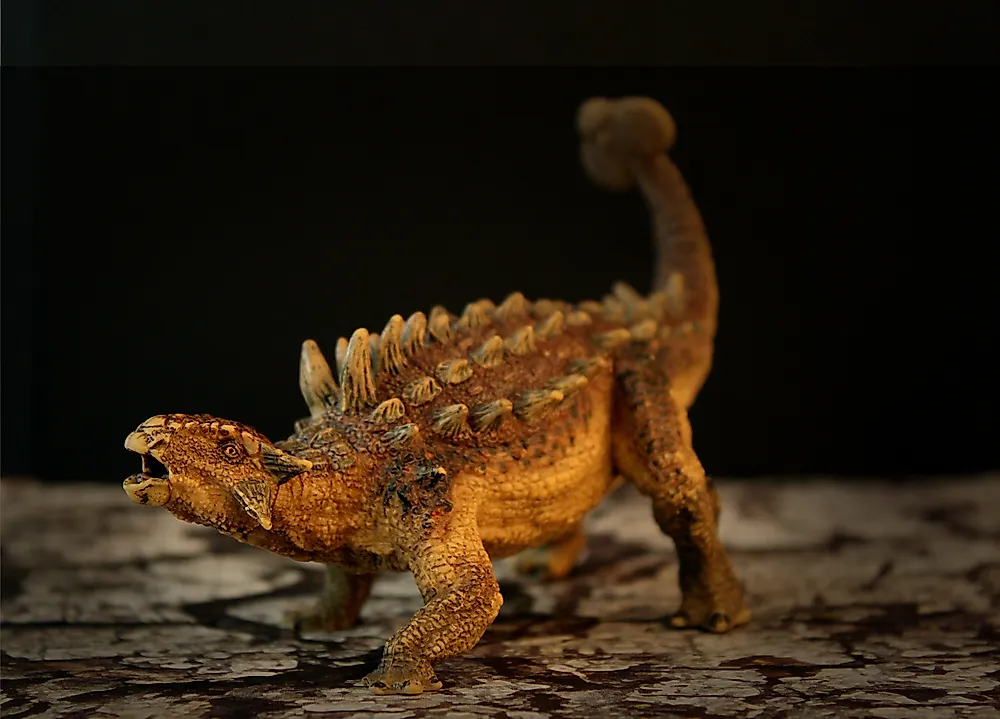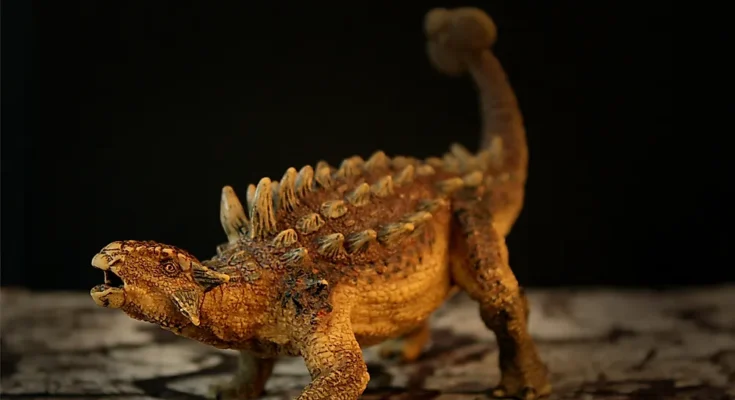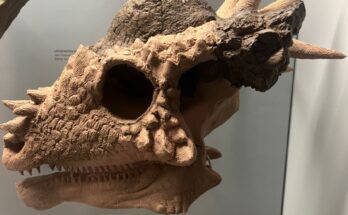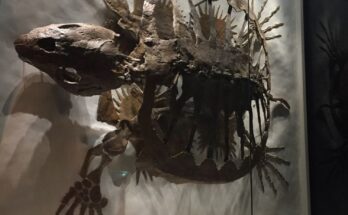Ankylosaurus Facts: Extinct Animals of the World

Description
Ankylosaurus is a dinosaur that was armed with spikes and had a tail with a club-like protrusion. The dinosaur was completely rugged. The bones of its skull and other parts of the body were fused which caused it to have rare strength. The size of the largest ankylosaurus specimen ever found was 20.5 feet in length, 5.6 feet height, and a width of 1.5 meters. With these dimensions, the dinosaur weighed an estimated 4.8-6 tonnes. The dinosaur was covered with a thick armor on its skin which consisted of oval plates of bone and massive knobs referred to as scutes and osteoderms respectively. The osteoderms had a thin compact bone externally and a thick spongy bone on the inside. Furthermore, they were covered with keratin and skin. There were two rows of spike along the body of ankylosaurus. The dinosaur had a long, low head which had some prominent horns that projected towards the back and side.
The Habitat and Feeding Habits of Ankylosaurus
The ankylosaurus existed in the Cretaceous period which was about 65.5 million to 66.8 million years ago. It was the last non-avian dinosaur to ever exist. Ankylosaurus lived in Canada and the western United States. The ankylosaurus fed on low lying plants and grassy pastures. It had a narrow beak at the end of the head that aided in stripping off leaves of plants. It also had leaf-shaped teeth that could break larger plants. To compensate for its inability to grind its food, the ankylosaurus had a fermentation system in their gastrointestinal tract that broke down any unchewed plants that they ate. Their nasal passage was complex and was not only for scent purposes. It was also important in regulation with its the body temperatures. Their central nervous system indicated that their brains had a large olfactory bulb. The bulb could sense smell so fast that it helped them obtain food and keep alert them of any predators.
The Fossil Findings of the Ankylosaurus
Barnum Brown, a paleontologist, found the first remains of the ankylosaurus dinosaur in 1906 at Hell Creek Formation in Montana. The remains were made of the top part of its skull, ribs, vertebrae, and the shoulder girdle. About 6 years later, he discovered its osteoderms. However, he thought that these belonged to another dinosaur type. When Brown unearthed the ankylosaurus remains for the third time, he found the limb bones, ribs, a complete skull, and armor. He also discovered the tail club. All of his findings are currently showcased in New York’s American Museum of Natural History. Up to date, no full skeleton of ankylosaurus has been unearthed. Apart from Brown’s discovery, only three major specimens of the ankylosaurus have been discovered. Charles Sternberg, a paleontologist, discovered the largest known skull of the ankylosaurus. The lack of ankylosaurus remains that have been discovered point to the fact that they were very rare. It could be because of their low population or high tendency of preying by other bigger dinosaurs. However, paleontologists say they believe ankylosaurus’ lived in environments far away from water bodies where fossilization is usually not very conducive.



